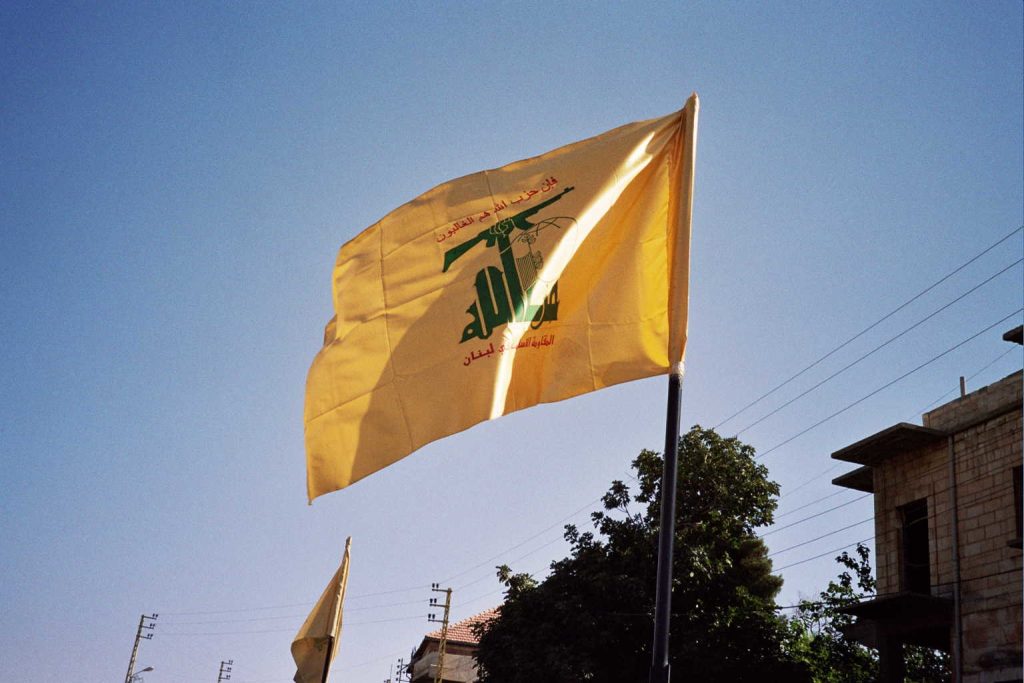In many ways, the events of fall 2024 represent a significant setback and a major turning point for Tehran’s influence in the Middle East. The spectacular sabotage of Hezbollah’s telecommunications system by Mossad, followed by Israeli airstrikes in southern Lebanon, the elimination of Hassan Nasrallah and militia leaders, along with the death of Yahya Sinwar, the military leader of Hamas, mark a notable weakening of Tehran’s non-state allies operating near Israel. The Iranian ballistic missile attack against Israel on October 1 and Tsahal’s response on October 26 indicate that the Islamic Republic, previously reliant on an indirect strategy, now finds itself on the front line. These events, far from being trivial, redefine the strategic dynamics between Iran and Israel in the Levant, further limiting options for Iranian leaders.
Overview of a Year of Asymmetric Conflict
Hezbollah remains the cornerstone of Iran’s strategy in the Middle East, a carefully armed and funded asset since 1982 designed to confront its Israeli and American enemies indirectly. As of September 2024, this Lebanese Shiite militia, with around 150,000 missiles and 80,000 fighters, serves as Iran’s primary deterrent against Israel, securing a strategic foothold in southern Lebanon and exerting pressure along Israel’s northern border. However, the destruction of a significant portion of its military capabilities in recent months — nearly 50%, according to Israeli sources — and the loss of its military and political leaders are altering the Israeli-Iranian equation. Hezbollah can no longer serve effectively as a strategic shield for the Iranian regime, and Tehran’s demonstrations of solidarity have been restrained, as evidenced by the limited scope of its recent ballistic response against Israel.
The crippling of Hezbollah’s operational capacity and the disruption of its decision-making processes compound the losses suffered by Hamas, another long-standing ally of Tehran in its rivalry with Israel. After nearly a year of warfare with the Israel Defense Forces (IDF), Hamas faces existential threats. The organization’s leadership structure has been critically undermined following the removal of key political and military figures, including the assassination of its political leader, Ismail Haniyeh, in central Tehran, and the death of Yahya Sinwar, its political chief and primary strategist behind the Al-Aqsa Flood operation of October 7. This leadership decapitation has been accompanied by a comprehensive and systematic effort by the IDF to dismantle its military capacities within the Gaza Strip.
It may be premature to declare Hamas and Hezbollah entirely out of the game. Both groups, with operational bases near Israeli territory, remain significant actors in the ongoing hostilities with Israel. Although they have suffered sustained aerial strikes targeting their command centers in Gaza and southern Lebanon, they continue to harass Israel through rocket attacks and other “gray zone” tactics. Despite substantial setbacks, Hezbollah and Hamas continue to receive external support, including weapons from Iran and other non-state partners.
However, while these organizations remain active and retain some regenerative capacity, their operational strength and influence on the power balance with Israel have nonetheless been seriously undermined, diminishing — at least in the short term — Iran’s potential influence in the Levant.
More so than Yemen’s Houthis, Syria’s Zainabiyoun and Fatemiyoun brigades, Iraq’s Hashd al-Shaabi, and other pro-Iranian militias throughout the region, Hezbollah and Hamas are central to the “axis of resistance.” This proxy network has, for decades, enabled Tehran to operate as a “strategic disruptor” against the interests of Israel and its Western partners. Carefully woven during the past four decades by the Islamic Revolutionary Guard Corps (IRGC) and the Quds Force, formerly led by General Qassem Soleimani, this “strategic rhizome” has relied heavily on Hamas and Hezbollah. These groups provide Tehran with a virtual border with what Iranian leaders call the “Zionist entity,” allowing it to encircle Israel. Hezbollah and Hamas have been the primary tools of Iran’s indirect warfare strategy, carried out below the threshold of interstate conflict.
Iran’s strategy involves granting its proxies sufficient autonomy to act independently while preserving plausible deniability. Under the banner of anti-imperialism, these entities of the “Axis of Resistance”, remotely directed by Tehran, harass and provoke U.S. forces and their regional allies, enabling Iranians to evade potential direct retaliation.
Increasingly Limited Options
With Hezbollah and Hamas neutralized, the Islamic Republic of Iran faces a rapidly shrinking set of strategic options. As noted by Trita Parsi, an Iranian expert in the U.S., Tehran is now left with “only poor choice”.
In 2024, the ballistic duel between Iran and Israel highlighted the limitations of Tehran’s conventional military capabilities. On the night of April 13–14, 2024, Iran launched 170 drones, 120 ballistic missiles, and cruise missiles at Israel in retaliation for the destruction of an annex of its embassy in Damascus. This attack killed several high-ranking Iranian officials. On October 1st, Tehran launched yet another salvo of over 180 ballistic missiles, including the Fattah-1, in response to the targeted elimination of senior Hezbollah, Hamas, and IRGC leaders. These offensives were intended to showcase the Islamic regime’s resolve toward Israel, re-establish a minimum level of deterrence, and reassure the various components of the “Axis of Resistance,” concerned by Iran’s relative inaction. However, in both instances, Israel’s air defense system, bolstered by Western allies, intercepted a significant portion of the Iranian projectiles.
Following the April episode, the IDF retaliated by striking an air base in Isfahan tasked with safeguarding the Natanz nuclear facility, which was responsible for protection, further exposing the Islamic regime’s vulnerability. On October 26, Israel launched a retaliatory airstrike targeting Iranian military assets: Although it remains unclear at the time of writing whether this operation marks a peak or the initial phase of a broader anti-regime campaign, Israel has once again demonstrated its conventional military superiority. Moreover, Iran’s repeated yet futile displays of ballistic capabilities primarily reveal its dwindling strategic options.
Iran’s leaders now recognize that their deterrence system, reliant on ballistic missiles and proxy networks, is no longer adequate to safeguard the country. Faced with Israel’s strategy of containing the Iranian regime by dismantling its asymmetric warfare capabilities, Iranian officials are increasingly aware of the erosion of their strategic depth. Acknowledging this growing pressure, they are driven to seek ways to offset this loss through other means. In this case, they are logically inclined to turn inward and attempt to secure the Iranian stronghold … by hastening the development of their nuclear program.
Over the past year, particularly since the events of October 7, 2023, the Islamic regime has significantly intensified its nuclear activities, particularly uranium enrichment, to levels approaching those needed for nuclear weapons production. In early 2024, the International Atomic Energy Agency (IAEA) raised alarms about Iran’s acceleration of uranium enrichment to 60%, which abruptly increased from 3 to 9 kg per month. This rapid increase represents a significant concern, as 60% enrichment can quickly be converted to the 90% threshold required for nuclear warhead production. Throughout 2024, Iran’s production rate has continued to grow amid escalating geopolitical tensions in the Middle East. This summer, further heightening international concerns, Kamal Kharrazi, a close adviser to Iran’s Supreme Leader, even mentioned a possible “shift in the nuclear doctrine,” though he specified that it would be contingent on renewed Israeli attacks on Iranian interests. However, reports from the IAEA and U.S. intelligence do not yet confirm, beyond a shadow of a doubt, that Iran has decisively opted for nuclear weapon production. Nor is it certain that possessing such a weapon would suffice to ensure the regime’s survival.
On the diplomatic front, Iranian leaders find themselves facing two equally unsatisfactory options, both carrying negative implications for national sovereignty. The first option involves attempting to restore ties with Western powers. President Massoud Pezechkian, a “moderate” elected in June, stated at the United Nations that his country aims to rebuild relations with liberal democracies, including by resuming negotiations on the nuclear issue. Some believe that Iran might even be willing to make concessions, such as “sacrificing” its partnership with Lebanon’s Shiites and Hezbollah. Yet, deep-seated mutual mistrust remains considerable, and many obstacles hinder the possibility of Tehran and Western governments warming their relations — especially with the potential election of a new Republican administration in the United States.
The alternative path, one that Tehran has increasingly pursued in recent years, would mean advancing the so-called “Look East” strategy. In recent years, Tehran has aligned more closely with Beijing and Moscow. In March 2021, Iran and China signed a comprehensive economic and security agreement, marking a significant step toward deeper cooperation. In September 2021, Iran began the process of joining the Shanghai Cooperation Organization (SCO), a regional bloc led by Russia and China. Since February 2022, Tehran has refrained from condemning the invasion of Ukraine, even providing logistical and military support to Moscow. At the SCO summit in September 2022, Presidents Vladimir Putin and Xi Jinping officially welcomed Iranian President Ebrahim Raisi, signalling Iran’s growing inclusion in what many see as a bloc countering Western influence.
In January 2023, Iran became a full member of the BRICS organization, and more recently, Tehran and Moscow have strengthened their military cooperation, particularly in ballistic missile technology, sparking concerns among some observers about a possible collaboration in the nuclear domain. However, this Iranian “Ostpolitik” also comes at a considerable price: it raises questions about Iran’s sovereignty by increasingly tying the regime’s political fate to the heavyweight Russian and Chinese powers in the Eurasian arena. This scenario aligns poorly with Iranians’ nationalism and the country’s strong desire to preserve its independence.
The Moment of Existential Choices
Confronted with a diminishing geopolitical maneuvering space on the international stage, the Islamic Republic is also undergoing a severe economic crisis and grappling with a growing internal challenge to its political legitimacy. In every respect, the regime finds itself at a crossroads, a decisive turning point that could destabilize its political foundations.
In the past, Tehran has demonstrated remarkable resilience, consistently navigating complex challenges by maintaining a multifaceted policy across all fronts and utilizing every available means. Militarily and economically disadvantaged, the Iranian “outsider” has implemented an asymmetric approach with surprising success, skillfully avoiding direct confrontations and striking where least expected. In doing so, the Iran of the mullahs and the Islamic Revolutionary Guard Corps has managed, in the words of Henry Kissinger, to “win by not losing.”
However, the once-unquestioned ability of the Islamist leaders to overcome significant challenges and maintain control over the country now appears to be faltering. Growing threats, combined with a narrowing range of strategic options, place the regime in a precarious position, especially as its adversaries increasingly make no secret of their desire to overthrow it. It is no longer certain that the tactics and solutions previously employed — which often helped preserve the system’s stability — will now be sufficient to guarantee the survival of the political and ideological regime established in 1979.





Comments are closed.